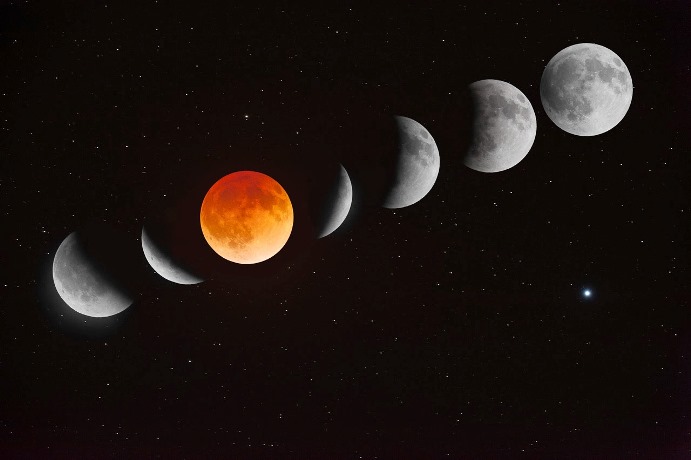Did you watch the total lunar eclipse and the Blood Moon? Judging from my Social Media feeds, a lot of people did!
It was actually visible only in parts of Northern America.
On average, lunar eclipses occur about twice a year, but not all of them are total. There are three types:
A penumbral eclipse is when the Moon passes through the pale outskirts of Earth’s shadow. It’s so subtle, sky watchers often don’t notice an eclipse is underway.
A partial eclipse is more dramatic. The Moon dips into the core of Earth’s shadow, but not all the way, so only a fraction of Moon is darkened.
A total eclipse, when the entire Moon is shadowed, is best of all. The face of the Moon turns sunset-red for up to an hour or more as the eclipse slowly unfolds.
Usually, lunar eclipses come in no particular order. A partial can be followed by a total, followed by a penumbral, and so on. Anything goes. Occasionally, though, the sequence is more orderly. When four consecutive lunar eclipses are all total, the series is called a tetrad.
“During the 21st century, there are 8 sets of tetrads, so I would describe tetrads as a frequent occurrence in the current pattern of lunar eclipses,” says Espenak. “But this has not always been the case. During the three hundred year interval from 1600 to 1900, for instance, there were no tetrads at all.”
The April 15th eclipse begins at 2 AM Eastern time when the edge of the Moon first enters the amber core of Earth’s shadow. Totality occurs during a 78 minute interval beginning around 3 o’clock in the morning on the east coast, midnight on the west coast. Weather permitting, the red Moon or the blood moon will be easy to see across the entirety of North America.
Why did the Blood Moon appear red on 15th April?
A quick trip to the Moon provides the answer: Imagine yourself standing on a dusty lunar plain looking up at the sky. Overhead hangs Earth, nightside down, completely hiding the sun behind it. The eclipse is underway.
You might expect Earth seen in this way to be utterly dark, but it’s not. The rim of the planet is on fire! As you scan your eye around Earth’s circumference, you’re seeing every sunrise and every sunset in the world, all of them, all at once. This incredible light beams into the heart of Earth’s shadow, filling it with a coppery glow and transforming the Moon into a great red orb.
Mark your calendar for April 15th and let the tetrad begin.
A Tetrad of Lunar Eclipses



